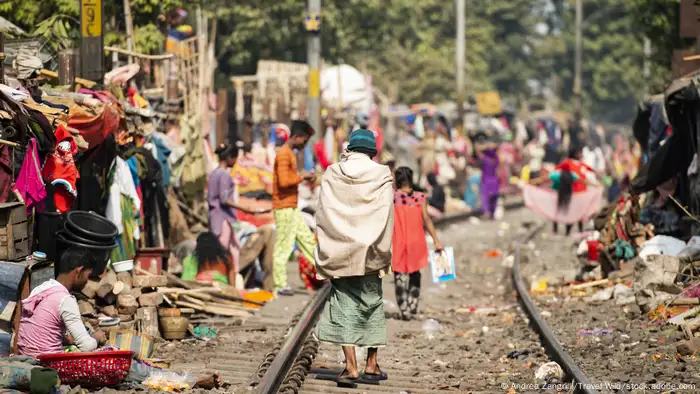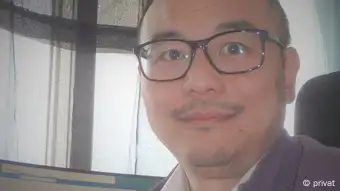Transparency and Media Freedom
"Four questions to..." FanMan Tsang, CDAC
Which information do people need when a disaster hits? How can relief organizations reach them? CDAC's FanMan Tsang says that knowing the country's media sector is key for communicating in a crisis.
The international CDAC Network (Communication with Disaster-Affected Communities Network) and DW Akademie are developing new Media Landscape Guides for eight DW Akademie focus countries: Belarus, Burkina Faso, Colombia, Malawi, Morocco, the Palestinian territories, Pakistan and Ukraine. The handbooks will provide up-to-date and crucial information about the countries' media and telecommunications sectors, including contact details to help relief organizations reach vulnerable groups in times of COVID-19.
DW Akademie spoke to FanMan Tsang, CDAC Network's Director for Capacity-Bridging and Technology, about the need for such a handbook and how it can assist organizations to communicate effectively in a crisis.
DW Akademie: Why do relief organizations need the Media Landscape Guides when they can already find the necessary information on the internet?
FanMan Tsang: In crisis situations, the communication between groups affected and response actors is fundamental for survival, just as food and water are. Online searches are easy but the information there needs to be checked to make sure it's accurate, representative and comprehensive. This takes time and expertise.
The Media Landscape Guides can be quicker and more useful as they instantly provide verified information on how to engage the media to reach a community. The guides also give a summary of in-country media expertise, media organizations and audiences, making it a valuable disaster-preparedness tool.
Crises vary and communication channels have to adapt. What are some unusual channels that you've found?
We usually associate media with more technical means but in many countries, such as Burkina Faso, traditional media forums for sharing information are still prevalent. These include live performances such as stage reviews, plays and verbal storytelling by town criers – the original form for distributing news!
In Belarus, where media freedom is restricted, some media practitioners have gone back to a much older form of social media where they're using handwritten letters to share information because these, they say, are harder to hack.
What are the dangers or disruptions associated with journalism and research in some countries?
The independent media sector in Belarus, for example, has been disrupted since August 2020 when newspapers were shut down and websites blocked. Independent outlets have relocated teams abroad and have turned to alternative content distribution channels such as social media and messaging apps. Some regional media that relocated now have even larger audiences. Although journalists in Belarus have been charged with crimes such as extremism or treason, Belarus' independent media have displayed a high level of resilience.
How can relief organizations respond to crises more effectively?
One of the best ways is for them to work with the local media that local people are using. Although humanitarian organizations are generally aware that they need to communicate with affected communities, they need to take a more inclusive approach and work with in-country media and organizations. Otherwise, organizations may work without a local context, culture or language. This results in top-down messages delivered in ways that do not reach everyone. The Media Landscape Guides are valuable for identifying the local actors who can provide leadership and assistance in an emergency.
The Media Landscape Guides will be published online in April 2022 and will be available in official languages of the countries concerned.
The CDAC Network is a global coalition of some of the world's largest humanitarian and media development organizations bringing together local, regional and global actors in crisis situations. www.cdacnetwork.org/media-landscape-guides
This project is part of the global initiative "Transparency and media freedom – Crisis resilience in the pandemic" of DW Akademie and is supported by the Federal Ministry for Economic Cooperation and Development.
- Date 04.02.2022
- Author Pia Lange, Ulrike Beseke
- Feedback: Send us your feedback.
- Print Print this page
- Permalink https://p.dw.com/p/46XCV
- Date 04.02.2022
- Author Pia Lange, Ulrike Beseke
- Send us your feedback.
- Print Print this page
- Permalink https://p.dw.com/p/46XCV



